The Queen City National Bank of Cincinnati—which eventually changed its name to the Fifth National Bank—was organized September 28, 1882.
our history
A history of providing superior customer service and following sound banking principles
A Bank Built On Trust
Our origins go back to the Bank of the Ohio Valley, which opened in Cincinnati in 1858. In 1871, that bank was purchased by the Third National Bank. With the turn of the century came the union of the Third National Bank and the Fifth National Bank, which eventually became known as "Fifth Third Bank."


Early in the 20th century came the union of the Third National Bank and the Fifth National Bank to form The Fifth Third National Bank of Cincinnati on June 1, 1908.

Fifth Third National Bank and the Union Savings Bank and Trust Company affiliated under the ownership of the same stockholders, allowing Fifth Third to establish a branch banking system.
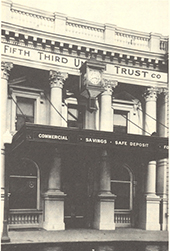
Fifth Third and the Union Trust Company consolidated to become Fifth Third Union Trust Company.
As the prosperity of the 1920s gave way to the Great Depression, Fifth Third emerged as one of the strongest banks in its market. It acquired three smaller banks from 1930 to 1933.
Fifth Third created the Fifth Third Foundation—the first corporate foundation established by a financial institution in the United States.

The 1950s saw Fifth Third focusing on convenience and service. By 1956, Fifth Third had 27 offices, including some new modern branches located in shopping centers.
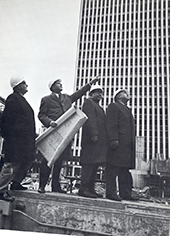
The Fifth Third Union Trust Company was officially renamed Fifth Third Bank. That same year the Bank adopted the 5/3 shield as its logo, and construction was completed at its current headquarters on Cincinnati’s Fountain Square.
Fifth Third formed a bank holding company and Fifth Third Bancorp was incorporated in 1974, allowing the bank to open offices in surrounding counties and bringing the total number of branches to 37 in 1976.
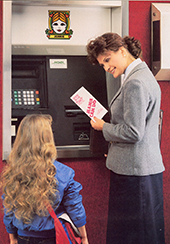
Fifth Third introduced an online automated teller system—JEANIE®—the first shared ATM network in the United States.
Fifth Third entered the 1980s with 88 offices all in Ohio and ended the decade with 198 offices in Ohio, Kentucky, and Indiana. Seven of those 198 offices were located in grocery stores, making Fifth Third Bank the first in the market to introduce seven-day-a-week Bank Marts® to accommodate busy lifestyles.

The famous Fifth Third Bank lapel pin was created in 1983 and was widely distributed to all employees by the late 1980s.
In the early 1990s, Fifth Third Bank addressed a gap in service affecting Midwest customers who traveled to Florida for the winter. It established a physical presence in Naples to provide uninterrupted service 12 months a year. Florida was among several new markets for Fifth Third over the next two decades. In 1990, the Bank had 214 branch locations, and by the end of 2010, it had 1,300 branches, adding Florida as well as Michigan, Illinois, Tennessee, West Virginia, Pennsylvania, Missouri, Georgia, and North Carolina.
The first "Fifth Third Day" was celebrated in 1991 by employees from Toledo and Findlay, Ohio. Each year since then, the Bank recognizes its employees, customers, and communities on the third day of the month—or 5/3 on the calendar.
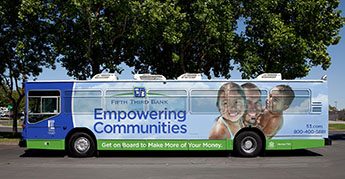
Fifth Third Bank’s commitment to financial empowerment took hold in 2004 with the launch of the Young Bankers Club, a hands-on financial literacy program for fifth-graders, and the Bank’s Financial Empowerment Mobile, or eBus, which brings financial services directly to underserved communities.
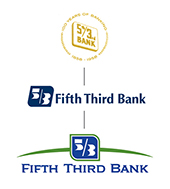
Fifth Third updated its logo, keeping the shield that had been part of its identity for decades, but changing the colors and adding a horizon line. The added green horizon line, which intersects the shield, was meant to represent a future of growth, opportunities, and possibilities.
Fifth Third expanded its commitment to financial empowerment following the economic downturn by teaming up with NextJob, a nationwide reemployment solutions firm, to offer an industry-first program where the bank pays for job search assistance for unemployed mortgage borrowers.